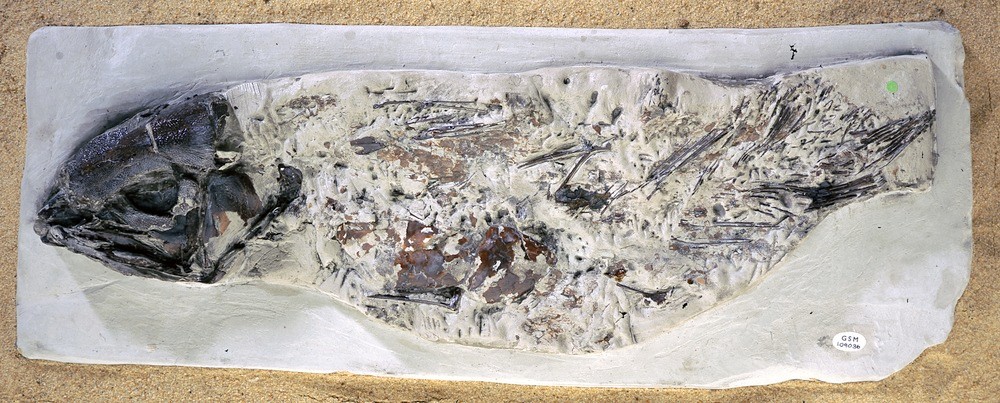| P number: | P549485 |
|---|---|
| Caption: | Macropoma, a coelocanth from the late Cretaceous. Specimen GSM109036. |
| Description: | Lobe-finned fish like coelocanths are occasionally found in the late Cretaceous (about 70 million years old) Chalk of Britain and in eastern Europe. However, coelocanths then seemed to disappear from the fossil record, and it was assumed that they had become extinct. However, in 1938 a living representative was found and they have since been found living off the Comoro Islands, Indian Ocean, and off Indonesia. Macropoma grew to about half a metre long. It had a deep body and a bulbous, 3-lobed tail. Its teeth are confined to the very front of the jaw. It had two dorsal fins, a pair of pectoral fins on its side and pelvic fins mid-way along on the underside of the body. Macropoma scales are very thin, ovoid plates of fibrous bone, enamelled on the outer surface. Fish are cold-blooded vertebrates with a braincase, fins for swimming and gills to take oxygen from the water (although some also have lungs). They therefore differ from other aquatic creatures like invertebrate molluscs or crabs; amphibians and reptiles, which have lungs and limbs rather than gills and fins; and whales and dolphins which are warm-blooded mammals. Fish are the first vertebrates, having evolved during the early Cambrian over 500 million years ago. |
| Photographer: | Unknown |
| Copyright statement: | NERC |
| Orientation: | Landscape |
| Size: | 433.59 KB; 1000 x 403 pixels; 85 x 34 mm (print at 300 DPI); 265 x 107 mm (screen at 96 DPI); |
| Average Rating: | Not yet rated |
| Categories: | Best of BGS Images/ Fossils |
Reviews
There is currently no feedback

